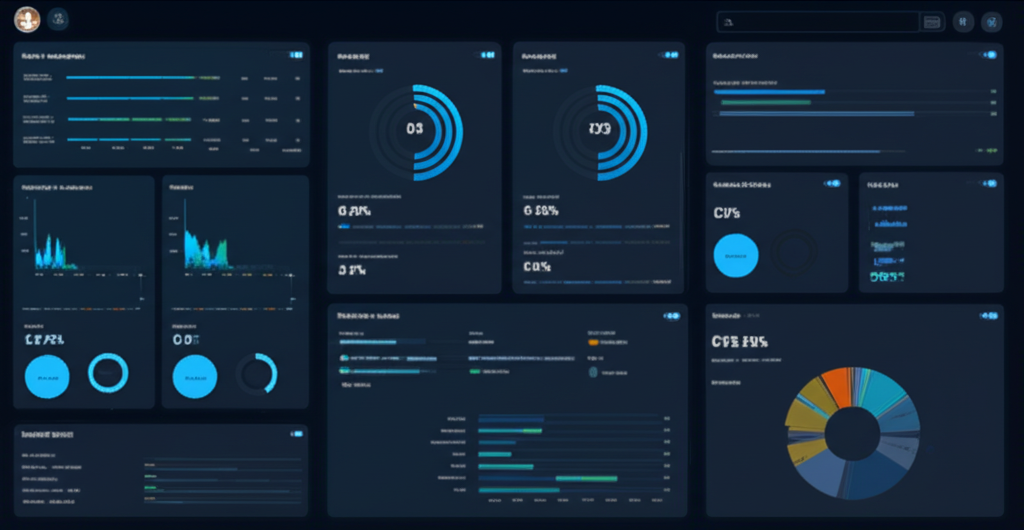Streamlining Financial Compliance with Intelligent Document Analysis
Learn how financial institutions leverage datakraft to automate regulatory reporting, ensure compliance, and reduce manual document review by 90%.

Financial institutions operate in one of the most heavily regulated industries in the world. From KYC (Know Your Customer) requirements to anti-money laundering (AML) compliance, regulatory reporting to audit preparation, the volume and complexity of compliance documentation continues to grow exponentially.
Traditional manual document review processes are not only time-consuming and expensive, but they're also prone to human error - a risk that financial institutions simply cannot afford in today's regulatory environment.
The Compliance Documentation Challenge
Financial institutions face several critical challenges in compliance document processing:
- Regulatory Complexity: Multiple overlapping regulations (SOX, Dodd-Frank, Basel III, GDPR) each with specific documentation requirements
- Volume Scale: Large banks process millions of compliance-related documents annually
- Time Sensitivity: Regulatory deadlines are non-negotiable, with severe penalties for late submissions
- Accuracy Requirements: Even small errors in compliance reporting can result in significant fines and regulatory scrutiny
- Audit Trails: Complete documentation and traceability of all compliance activities
AI-Powered Solutions in Action
KYC and Customer Onboarding
A major regional bank reduced their customer onboarding time from 5 days to 2 hours by automating the processing of identity documents, financial statements, and compliance forms. The system automatically verifies document authenticity, extracts relevant data, and flags potential compliance issues for human review.
Regulatory Reporting Automation
Financial institutions are automating the creation of regulatory reports by automatically extracting data from transaction records, loan documents, and trading records. This reduces report preparation time by 80% while improving accuracy and consistency.
AML Transaction Monitoring
Anti-money laundering compliance requires analysis of vast amounts of transaction documentation. AI-powered document processing can automatically identify suspicious patterns, extract relevant information from supporting documents, and generate compliance reports.
Implementation Strategy
Phase 1: Document Classification and Extraction
Start by implementing automated classification of incoming compliance documents and basic data extraction. This provides immediate value while building confidence in the technology.
Phase 2: Workflow Integration
Integrate document processing with existing compliance management systems and workflow tools. This ensures seamless adoption and maximizes efficiency gains.
Phase 3: Advanced Analytics
Implement advanced analytics and pattern recognition to identify compliance risks and trends across document sets.
Compliance and Security Considerations
When implementing AI-powered document processing for financial compliance, several critical factors must be addressed:
- Data Security: End-to-end encryption and secure processing environments
- Audit Trails: Complete logging of all document processing activities
- Regulatory Approval: Ensuring AI systems meet regulatory requirements for financial institutions
- Model Governance: Proper oversight and validation of AI models used in compliance processes
Measuring ROI in Compliance
Financial institutions typically see significant returns on investment:
- 70-90% reduction in manual document review time
- 50-80% faster regulatory report preparation
- 95%+ accuracy in data extraction and classification
- Reduced compliance staff overtime and burnout
- Lower risk of regulatory fines due to improved accuracy
- Enhanced audit readiness and documentation quality
Future Trends in Financial Compliance
The future of financial compliance documentation is moving toward:
- Real-time Compliance Monitoring: Continuous analysis of transactions and documents as they occur
- Predictive Compliance: Using AI to predict and prevent compliance issues before they occur
- Cross-border Harmonization: Automated handling of multiple regulatory jurisdictions
- Blockchain Integration: Immutable audit trails and document verification
Getting Started with Compliance Automation
For financial institutions looking to implement AI-powered compliance document processing:
- Assess Current State: Identify high-volume, repetitive compliance processes
- Start Small: Begin with a pilot program focusing on one specific compliance area
- Ensure Governance: Establish proper oversight and validation processes
- Measure Impact: Track efficiency gains, accuracy improvements, and cost savings
- Scale Gradually: Expand to additional compliance areas based on pilot success
The transformation of financial compliance through AI isn't just about efficiency - it's about building more robust, accurate, and reliable compliance processes that protect both institutions and their customers.
Disclaimer: This article presents theoretical applications and case studies for illustrative purposes. Financial institutions should work closely with their compliance and legal teams to ensure any AI implementation meets all regulatory requirements and internal governance standards.
datakraft Team
Expert in AI-powered document processing and enterprise automation solutions. Passionate about helping organizations transform their document workflows through intelligent technology.


